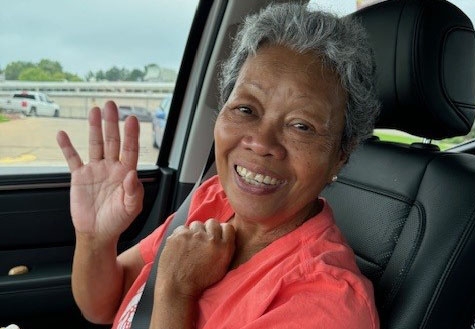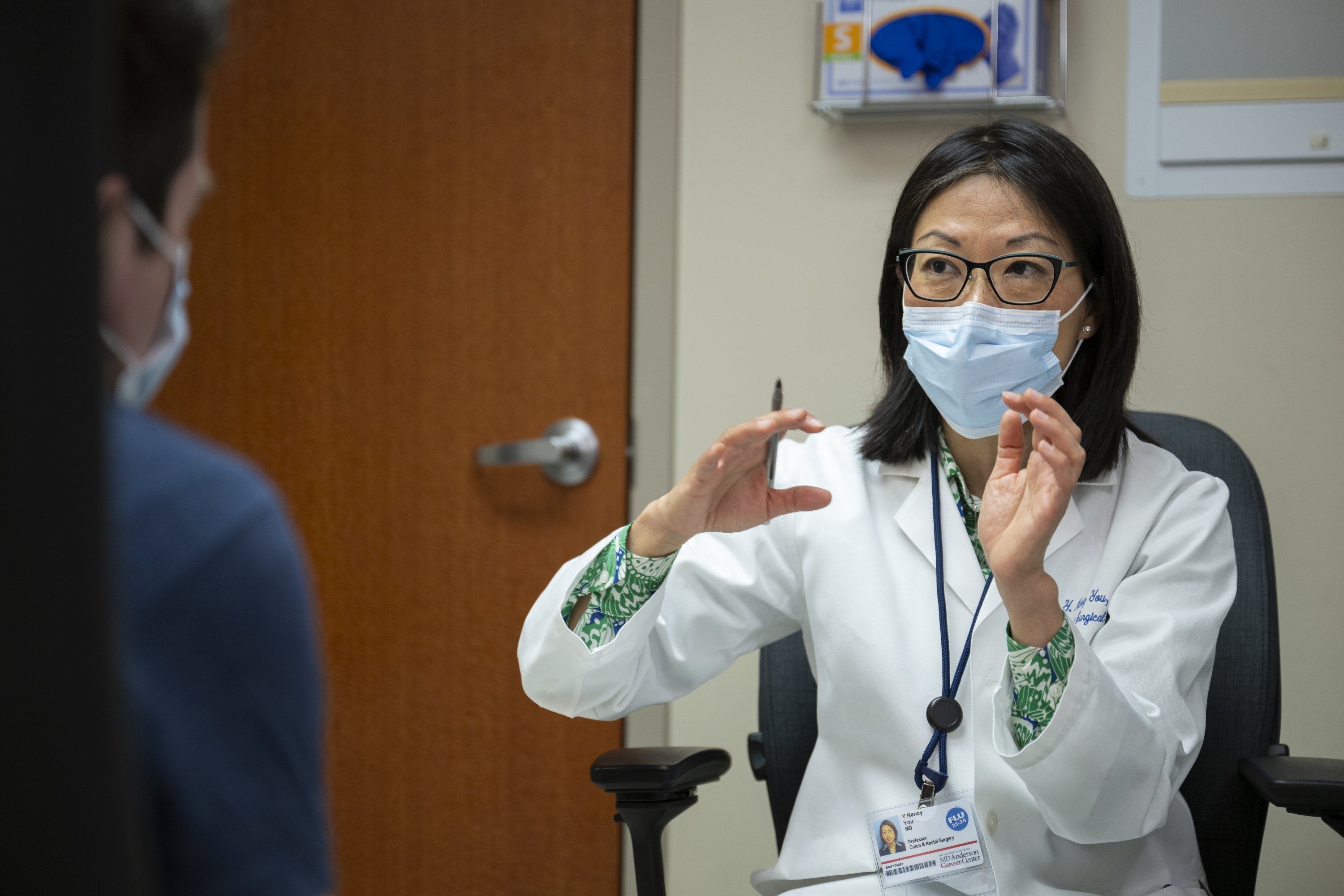- Diseases
- Acoustic Neuroma (14)
- Adrenal Gland Tumor (24)
- Anal Cancer (68)
- Anemia (2)
- Appendix Cancer (16)
- Bile Duct Cancer (26)
- Bladder Cancer (72)
- Brain Metastases (28)
- Brain Tumor (232)
- Breast Cancer (714)
- Breast Implant-Associated Anaplastic Large Cell Lymphoma (2)
- Cancer of Unknown Primary (4)
- Carcinoid Tumor (8)
- Cervical Cancer (158)
- Colon Cancer (166)
- Colorectal Cancer (118)
- Endocrine Tumor (4)
- Esophageal Cancer (44)
- Eye Cancer (36)
- Fallopian Tube Cancer (8)
- Germ Cell Tumor (4)
- Gestational Trophoblastic Disease (2)
- Head and Neck Cancer (12)
- Kidney Cancer (128)
- Leukemia (342)
- Liver Cancer (50)
- Lung Cancer (286)
- Lymphoma (278)
- Mesothelioma (14)
- Metastasis (30)
- Multiple Myeloma (100)
- Myelodysplastic Syndrome (60)
- Myeloproliferative Neoplasm (6)
- Neuroendocrine Tumors (16)
- Oral Cancer (100)
- Ovarian Cancer (172)
- Pancreatic Cancer (160)
- Parathyroid Disease (2)
- Penile Cancer (14)
- Pituitary Tumor (6)
- Prostate Cancer (146)
- Rectal Cancer (58)
- Renal Medullary Carcinoma (6)
- Salivary Gland Cancer (14)
- Sarcoma (238)
- Skin Cancer (296)
- Skull Base Tumors (56)
- Spinal Tumor (12)
- Stomach Cancer (64)
- Testicular Cancer (28)
- Throat Cancer (92)
- Thymoma (6)
- Thyroid Cancer (98)
- Tonsil Cancer (30)
- Uterine Cancer (80)
- Vaginal Cancer (16)
- Vulvar Cancer (20)
- Cancer Topic
- Adolescent and Young Adult Cancer Issues (20)
- Advance Care Planning (10)
- Biostatistics (2)
- Blood Donation (18)
- Bone Health (8)
- COVID-19 (362)
- Cancer Recurrence (120)
- Childhood Cancer Issues (120)
- Clinical Trials (632)
- Complementary Integrative Medicine (22)
- Cytogenetics (2)
- DNA Methylation (4)
- Diagnosis (232)
- Epigenetics (6)
- Fertility (62)
- Follow-up Guidelines (2)
- Health Disparities (14)
- Hereditary Cancer Syndromes (126)
- Immunology (18)
- Li-Fraumeni Syndrome (8)
- Mental Health (116)
- Molecular Diagnostics (8)
- Pain Management (62)
- Palliative Care (8)
- Pathology (10)
- Physical Therapy (18)
- Pregnancy (18)
- Prevention (918)
- Research (392)
- Second Opinion (74)
- Sexuality (16)
- Side Effects (604)
- Sleep Disorders (10)
- Stem Cell Transplantation Cellular Therapy (216)
- Support (402)
- Survivorship (322)
- Symptoms (182)
- Treatment (1786)
Blastic Plasmacytoid Dendritic Cell Neoplasm patient finds hope
BY Frank Dukes
4 minute read | Published July 26, 2016
Medically Reviewed | Last reviewed by an MD Anderson Cancer Center medical professional on July 26, 2016
About 18 months ago, I was diagnosed with Blastic Plasmacytoid Dendritic Cell Neoplasm (BPDCN), a rare and aggressive type of leukemia.
After I received my diagnosis, the first thing I did was Google BPDCN. The information was overwhelming and discouraging. That’s why I am compelled to share the story of my diagnosis, treatment and remission from Blastic Plasmacytoid Dendritic Cell Neoplasm (BPDCN). I want to help newly diagnosed patients find encouragement.
My Blastic Plasmacytoid Dendritic Cell Neoplasm diagnosis
In June 2014, I noticed a knot the size of a grape on the outside of my right calf. By August, it was about 3/4-inch in diameter. At Christmas, it was larger than a quarter, somewhat flat and firm with a purplish-brown color. It was not attached to the underlying muscle, but to the skin.
A surgeon in Alabama removed it and sent it to a lab. He called days later to say it was BPDCN. An oncologist scheduled blood work, a CT scan and a bone marrow aspiration and bone biopsy. The biopsy and blood work were negative, cancerous cells were detected along the margins of the skin tissue removed.
The surgeon highly recommended participating in a SL-401 clinical trial, a type of targeted therapy. We made an appointment at MD Anderson.
My SL-401 clinical trial at MD Anderson
On Feb. 13, 2015, we visited MD Anderson’s Leukemia Center, where we met with Naveen Pemmaraju, M.D., to discuss the SL-401 clinical trials. We were accepted. This meant we had to live in Houston for eight months. We returned home, took care of our personal affairs and said goodbye to our family.
My SL-401 treatment
The SL-401 protocol was set up with six 28-day cycles. During the first five to 10 days of each cycle, I’d receive five SL-401 chemo infusions as an inpatient. Each hospital stay would end when I received five treatments or had stayed in the hospital 10 days, whichever occurred first. For the balance of each 28-day cycle, I’d receive outpatient checkups.
I started cycle 1 as an inpatient on March 9. I received three treatments in the first four days before fluid retention and liver enzymes reached unacceptable levels. After 10 days, I was released.
Cycle 2 started on April 6. I had five treatments in five days and was discharged. My body had adjusted to the chemo, and I did a better job limiting fluid intake.
Cycles 3-7 were the same. I became the first BPDCN patient at MD Anderson to complete seven cycles and go in complete remission. Since I had advanced to this point and was in remission, Dr. Pemmaraju decided that I should undergo a stem cell transplant rather than going home.
My doctors gave us a 10-day break to return home to east Alabama before the next phase of my treatment. It was good to see our family.
My stem cell transplant
On Aug. 25, we met with Muzaffar Qazilbash, M.D., and his stem cell transplant team.
Since I did not have cancer in my bone marrow, I would be able to use my own stem cells. I was admitted to the hospital on Sept. 16. I had six days of chemotherapy infusions to kill any remaining cancer cells and to wipe out my immune system so my body would not reject my stem cells.
I received the stem cells on Sept. 23, also referred to as day 0 of the transplant process. I didn’t feel the effects of the chemo initially, but eventually my white blood cell count was at zero as expected. I was fatigued, had mouth sores, and lost both my appetite and my hair.
My white blood cell count started to rebound on day 8. On day 12, I got to leave the hospital and return to our apartment. Just 11 days later, Dr. Qazilbash released us to go home.
I now return to MD Anderson every three months for follow-up visits, and all continues to be well.
Advice for Blastic Plamacytoid Dendritic Cell Neoplasm patients
Before all this, my wife and I were just ordinary people enjoying life’s blessings. We never expected a Blastic Plamacytoid Dendritic Cell Neoplasm diagnosis. But it happened, and the route we took was the correct one. We knew we weren’t in this alone and took things one day at a time. The MD Anderson doctors, nurses and staff were the best. They are driven to find a cure for cancer.
If you’ve been diagnosed with Blastic Plamacytoid Dendritic Cell Neoplasm, I urge you to speak with your doctor about clinical trial options. With the availability of SL-401 and the improvements doctors will make to the protocol, there’s hope for future BPDCN patients. My prayers are with you.
January 2019 update
It has been three-and-a-half years since I went into remission and a little more than three years since I completed my stem cell transplant and returned home to Alabama. As I was writing this, I learned that SL-401 has been approved by the U.S. Food and Drug Administration.
I thought it good for current and new BPDCN patients to know that I continue to do well and have no concerns about my cancer. I am not required to take any medications or undergo follow-up procedures.
I am living a normal life. I continue to return to MD Anderson for check-ups. The first year, they were quarterly; the next two years I had them twice a year. I am now scheduled to return annually.
In retrospect, I realize just how dedicated my leukemia and stem cell transplant teams are and how well they worked together.
Request an appointment at MD Anderson online or by calling 1-866-526-0045.
Related Cancerwise Stories

We knew we weren’t in this alone and took things one day at a time.
Frank Dukes
Survivor





